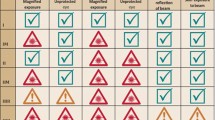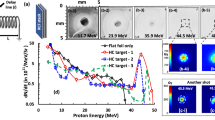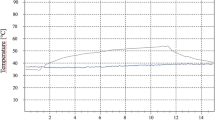Abstract
THE characteristics of the laser beam which are of great interest and importance from the biomedical aspect are the ability to direct and to focus, intense energy density and some selectivity1. Since the laser beam is a light beam, it can be focused most accurately by using lens systems. Energy density is intense. In these experiments, the energy density was approximately 9,000 joules/cm2 in the target area. Selectivity indicates that materials which are coloured absorb more of the incident beam of the lasers now available than uncoloured materials. In addition to these properties, of interest to the dentist is the fact that the duration of the impact is in the order of a millisecond.
This is a preview of subscription content, access via your institution
Access options
Subscribe to this journal
Receive 51 print issues and online access
$199.00 per year
only $3.90 per issue
Buy this article
- Purchase on SpringerLink
- Instant access to full article PDF
Prices may be subject to local taxes which are calculated during checkout
Similar content being viewed by others
References
Goldman, Leon, Blaney, Donald J., Kindel, Daniel J., Richfield, Daniel, and Franke, Ernst K., Nature, 197, 912 (1963).
Author information
Authors and Affiliations
Rights and permissions
About this article
Cite this article
GOLDMAN, L., HORNBY, P., MEYER, R. et al. Impact of the Laser on Dental Caries. Nature 203, 417 (1964). https://doi.org/10.1038/203417a0
Issue date:
DOI: https://doi.org/10.1038/203417a0
This article is cited by
-
Histological evaluation of mouse tongue incisions after Er:YAG laser surgery with different pulse energies versus after conventional scalpel surgery
Lasers in Medical Science (2023)
-
Clinical effectiveness of Er,Cr:YSGG lasers in non-surgical treatment of chronic periodontitis: a meta-analysis of randomized controlled trials
Lasers in Medical Science (2021)
-
Evaluation of the clinical and biochemical efficacy of erbium, chromium:ytrium-scandium-gallium-garnet (ER,CR:YSGG) laser treatment in periodontitis
Lasers in Medical Science (2020)
-
Importance of laser-induced breakdown spectroscopy for hard tissues (bone, teeth) and other calcified tissue materials
Lasers in Medical Science (2015)
-
Simulation of temperature and thermally induced stress of human tooth under CO2 pulsed laser beams using finite element method
Lasers in Medical Science (2015)



